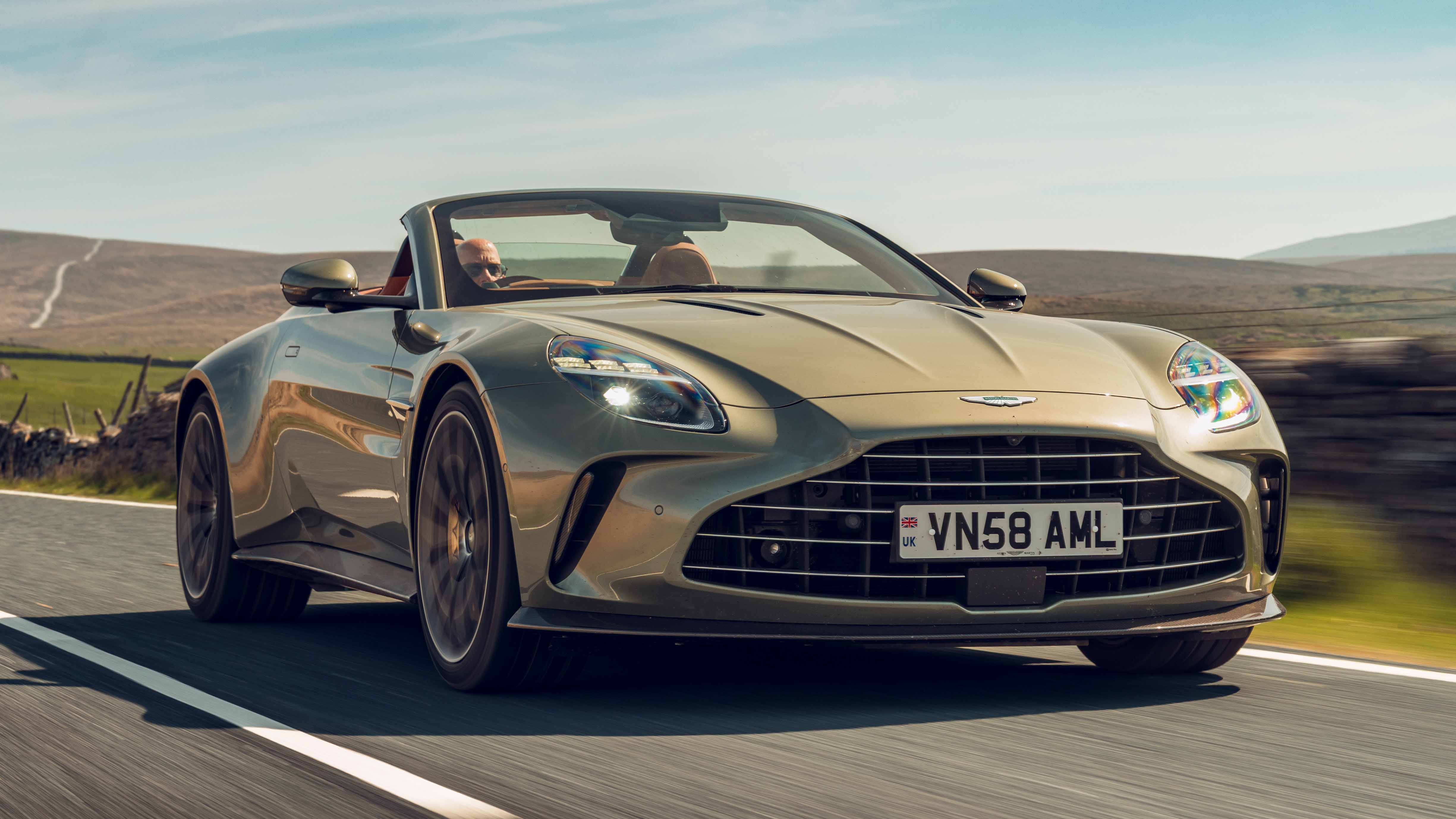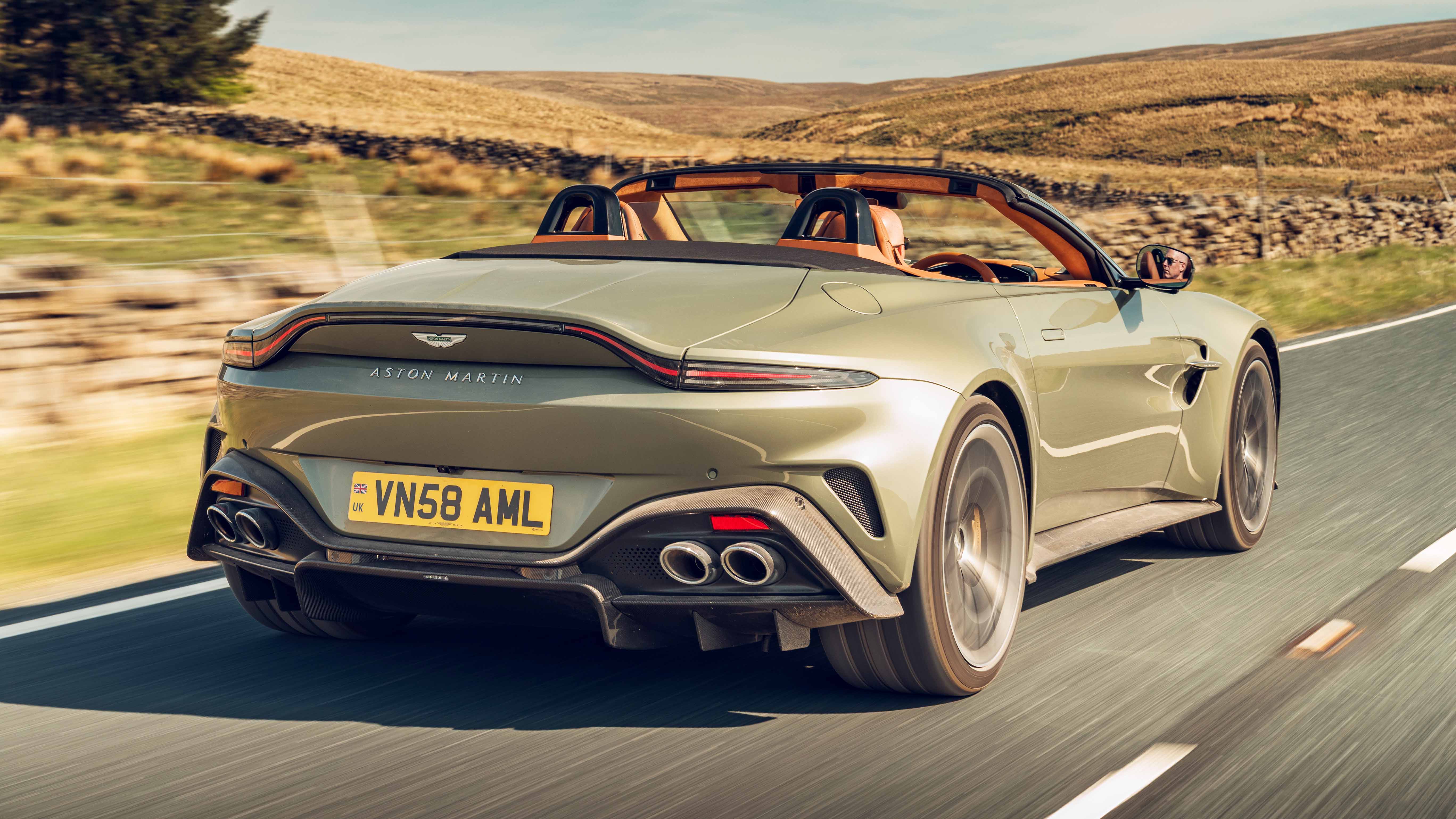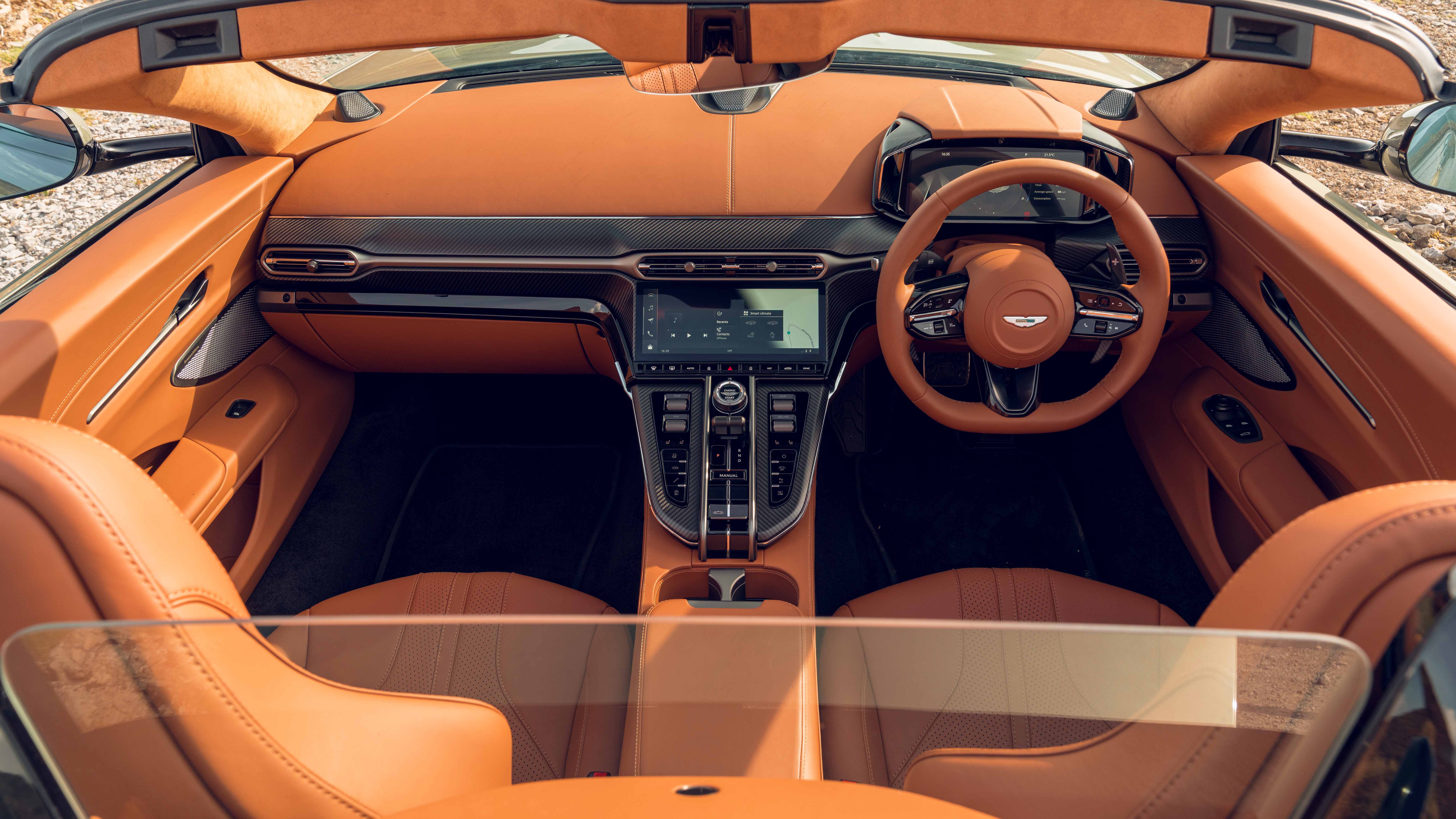
Driving
What is it like to drive?
Which button to press first: Engine Start or roof down? The Roadster’s top-folding mechanism is impressive: swift and quiet, though the ugly clasp where the roof tensioner hooks on looks a bit Nineties. Also, when the roof is down, there’s an unsightly gap around its final resting place. A sort of moat we’d worry would fill with dried up leaves and rubbish. That should be flush, surely?
Distract yourself by holding down the glass starter button. The V8 catches after a teasing starter motor whine and idles with an expensive, brooding rumble. Where Ferrari flat-plane crank motors blare at idle, and McLarens drone hoarsely, the V8 sounds like it’s quaffing super-unleaded like a well-lubricated sommelier.
By twisting the (oddly stiff) collar around the starter button, you cycle through the modes: Wet, Sport, Sport+ and Track. There’s also an Individual option to tailor your personal faves. But (like the coupe) the Vantage has a high baseline of aggression and never really deviates from it.
Is it a good convertible though?
Yes – no worries about half-arsed aero here. Maybe it’s spent longer in the wind tunnel than Aston’s current F1 car.
At speed, the cabin is rippled with a pleasant breeze, not attacked with a category-five hurricane. Wasn’t expecting that, given the teeny wind deflector and lack of rear buttresses to block the turbulence.
And if your only previous experience of a drop-top Aston was an Eighties Vantage or perhaps a DB9 Volante, which tended to shiver like ice cubes had been tipped into its seat pockets, then it’s good news in the latest Vantage Roadster. Even on challenging roads the windscreen doesn’t shake. No embarrassing chassis groans as you park up.
So all of the coupe’s good points have survived intact?
Not quite. Aston has reworked the rear suspension settings for the Roadster and even changed the transaxle gearbox mounts to rein in the mass, but you can sense, when uncorking that mighty engine, that the car is struggling to multi-task. Encounter a bump while applying the power and it’ll snatch for traction, taking one-and-a-half movements to settle before totally regaining its composure.
This means you can’t just slap the pedal to the carpet in a binary, point’n’shoot sort of way. Full power is something to build up to. If that’s frustrating to you, then buy a 911 Turbo. If it isn’t, you’ll enjoy the naughty sense of occasion.
Torque is what defines driving the Vantage. There’s just so much oomph to lean on. You can almost sense the wheels twisting inside the tyres at times. And that’s what papers over the Vantage’s occasionally haphazard traction. Or the still-too-slow gearbox, which treats commands from the downshift paddle as optional. Annoying if you’re chasing tenths. But when you’ve got a tactical nuke under the bonnet, you only really require third.
Will I care that the engine is turbocharged?
No, because this is one of the most characterful engines still in mainstream production. It cackles and rumbles, it bellows and gargles, and yet it manages to have a zingy top end that’s worth occasionally spinning up for. Only for the noise – there’s so much torque you could upshift at just 3,000rpm and still be home from work early.
Does the handling feel dumbed down?
Because of that nagging sense the rear axle isn’t brilliantly tied down, the Roadster has lost a step on the coupe. This is an observation rather than a deal-breaker. In the old days no cabrio was anything like as nice to drive as a coupe version. These days, a select few manage it. Aston’s getting close, but you can sense there’s been a compromise made.
What impedes the Vantage from true greatness, on a British road at least, is its size and visibility. Too much of the former (that width looks fab but it slaps cats-eyes everywhere it goes) and too little of the latter. The scuttle (the dashboard height) and tall shoulderline make what ought to be the wieldiest Aston tricky to place. And because there are no ‘humps’ in the front wings to sight the front axle, it’s impossible to place the nose with precision.
Luckily, the steering is reassuring to lean on (though why Aston still offers three steering ‘weights’ is beyond us, just choose one already) and the car has phenomenal lateral grip. Keep the dampers in their softest setting and it’s an excellent seven-tenths car. Take it beyond that with the eight-stage traction control ratchet and, well, you’ve been warned.
Featured







